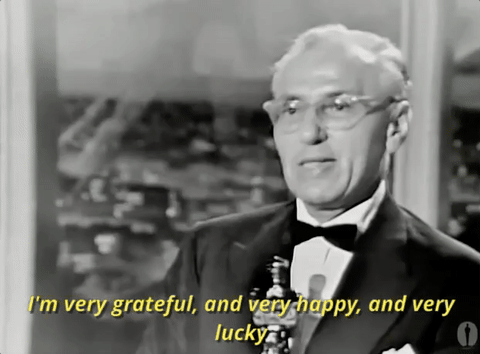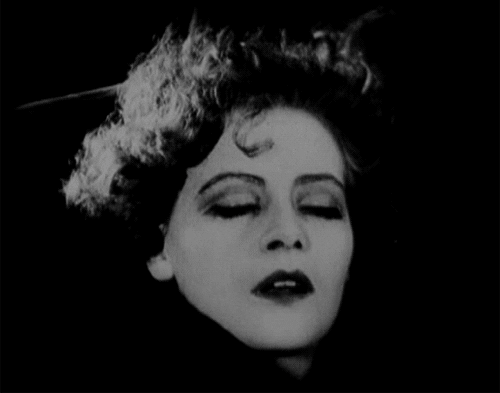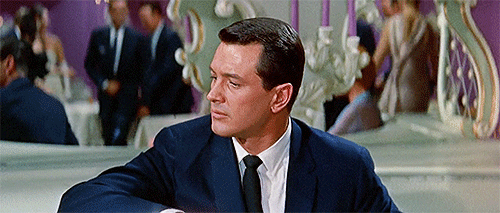The gay subculture of early Hollywood has gained more attention recently thanks to the Netflix series Hollywood. While the show does feature portrayals of some real celebrity characters, its main focus is on the fictional minority characters and the made-up success story of their diverse film. Many stars in Hollywood from the 1930s suppressed their sexuality. They didn’t get the freedom that LGBT performers have now, but that doesn’t mean their lives needed a false happy ending in order to be recognized and appreciated.
Knowing the complete history of LGBT stars in the first decade of Hollywood is difficult since, in order to appeal to the public, publicists believed that aspect of their lives needed to be hidden. Knowing as much as we do about some LGBT stars is a feat considering how much rewriting and covering up the Hollywood studio heads did to everyone they managed, whether gay or straight. Biographies were changed to sound more interesting or relatable to fans, and relationships were deliberately orchestrated to publicize a movie or introduce a new star to the public. The only indication of some stars’ hidden sexuality comes from unprovable rumors, many of them spread after their deaths.
Remarkably, a number of stars did openly discuss their sexuality, usually later in life. Or, the truth about their relationships became widely known by historians and have therefore been accepted as fact. The following screen performers and artists from the Golden Age of the film industry, some of them from the same time period as Hollywood‘s setting, are now confirmed LGBT icons of that era.
Tab Hunter (1931-2018)
Born Arthur Gelien, Tab Hunter was discovered at 17 years old and ushered into a film career. He was never considered a star for his extraordinary acting ability so much as his undeniable good looks and charm. His tan, chiseled face and blonde hair made him a poster boy for the wholesome all-American young man during the 1950s and ’60s. He was often cast as the dashing American soldier and the object of female desire. His immense popularity with young female fans is precisely why he kept his sexuality a secret for most of his life. In his own words, he felt “painfully isolated, stranded between the casual homophobia of most ‘normal’ people and the flagrantly gay Hollywood subculture – where [he] was even less comfortable and less accepted.”
Five years before Hunter became a star, he was arrested along with several other men for “lewdness,” a common charge for men showing any signs of homosexuality in public. His arrest became the topic of Confidential magazine, a glorified tabloid that outed several stars during its reign, including Hunter, Lizabeth Scott, and Van Johnson. Hunter’s studio decided to ignore the story, predicting that many people will forget about his arrest, and they were right. No one wanted to believe that America’s golden boy could be a gay man.
Hunter did not have an incredibly long and memorable career, but he was able to leave the business on his own accord. He is also one of the few Old Hollywood stars who were able to marry their longtime partners once same-sex marriage was legal in California. He was able to talk about his sexuality openly later in his life, which many other huge stars were not able to do either. The story of his life and career is well-told in the 2015 documentary Tab Hunter Confidential.
George Cukor (1899-1983)
George Cukor was one of Hollywood’s recruits from the New York theater scene after sound was introduced into moviemaking. He found success at RKO Pictures and quickly gained a reputation for being “the woman’s director” for being one of few filmmakers who could get great performances out of any actress. He became the go-to director for women’s pictures — movies made about women and for women. With his success as a director came his popularity as a socialite as well. Cukor’s mansion, decorated by gay former actor William Haines, became the center of LGBT society in Hollywood. It was a well-known fact that Cukor was gay, even though he never publicly spoke about it.
For the most part, his sexuality didn’t get in the way of his success. However, he was asked to leave one of the largest Hollywood productions of all time. Cukor was the original director of Gone With the Wind. He coached Olivia de Havilland and Vivien Leigh for their roles for months before production started, but he had several issues with the way the film was being made. Leading man Clark Gable was very hostile about working with Cukor because the director’s sexuality made the actor uncomfortable. It’s been rumored that this was because Gable used to be a sex worker (much like the men shown at the gas station on the show Hollywood), and Cukor had once been his customer. Gable never wanted his past to get out and tarnish his aggressively masculine persona. It’s more likely that Cukor was kicked off the project because of his issues with the script and producer David O. Selznik’s prodding into Cukor’s slow-moving directorial process.
Cukor directed from the 1930s all the way until the 1980s. His personality made him different in Hollywood, but it’s also what made him stand out amongst all the controlling, masculine directors of the time. Cukor may have never been able to explicitly talk about his sexuality, but he helped solidify the gay community in Hollywood.
Dorothy Arzner (1897-1979)

Dorothy Arzner had been in contact with Hollywood talent ever since early stars like Mary Pickford visited her father’s restaurant in San Francisco when she was a girl. She eventually left a career in medicine to work in the movie industry, starting out as a set decorator. In her own words, she discovered “if one was going to be in this movie business, one should be a director because he was the one who told everyone else what to do.” Arzner demanded a movie to direct and got what she wanted with her first film, Fashions for Women, in 1927. She became the first woman to direct a sound film and the only female director working when her last film was made in 1943.
Arzner maintained a long-term relationship with choreographer Marion Morgan for 40 years, until Morgan’s death. Her sexuality was never something she felt the need to hide, resulting in several rumors that she had affairs with her leading ladies, including Joan Crawford and Katharine Hepburn. However, those rumors were never confirmed. Arzner refused to accept any limitations put on women in Hollywood. She directed what she wanted, wore what she wanted, and loved who she wanted until she died.
Greta Garbo (1905-1990)
Hollywood loved Greta Garbo for her sensuality on screen but could never understand why she hid her personal relationships in her real life. She attracted everyone she met with her exotic Swedish accent and stoic nature. In The Girls: Sappho Goes to Hollywood, writer Diana McLellan shows that Garbo’s life was not without fiery romance despite her legendary preference for solitude. She had passionate relationships with mostly women, excluding her well-publicized attachment to John Gilbert. Some of the women she wrote love letters to during her life included Swedish actress Mimi Pollack and writer Mercedes da Costa. In one letter to Pollack, Garbo wrote, “We cannot help our nature, as God has created it. But I have always thought you and I belonged together.” McLellan also tries to prove that Garbo and Marlene Dietrich had an affair in Berlin before both became international movie stars. Garbo refused to let anyone speak about Dietrich around her but never admitted to a relationship with her.
Garbo was one of the few stars to flourish in both the silent and sound eras, but her career did not last long. She hated being a celebrity and after one flop of a movie, incidentally George Cukor’s Two-Faced Woman, Garbo retreated out of the public eye until her death in 1990. Garbo’s secretive nature and short career make her an intriguing mystery to this day.
Ramon Novarro (1899-1968)
Mexican-American actor Ramon Novarro was marketed as the rival to sex icon Rudolph Valentino. His revealing costumes and on-screen romances with top stars drew audiences from the silent era into the late 1930s. Following Valentino’s death in 1926, Novarro’s status as the go-to Latin lover solidified. His immense success didn’t last long, however. MGM chose not to renew his contract in 1935, and Novarro struggled to find roles on his own.
He also struggled to accept his homosexuality thanks to his strict Roman Catholic upbringing. Despite his guilt, Novarro had several relationships with men during the height of his career, including journalist Herbert Howe. Novarro’s sexuality became sensationalized for the public after his death made national news. In 1968, brothers Paul and Tom Ferguson called Novarro and offered to have sex with him if he paid them. Novarro let them in, and they murdered him after torturing him for money. Novarro’s death became a bigger part of popular culture than his films for younger audiences, but Mata Hari, the 1925 version of Ben-Hur, and more remain classics, partly because of his performances.
Patsy Kelly (1910-1981)
Patsy Kelly‘s name may not ring a bell to most, but you’ve certainly seen her play the sass-mouthed best friend in 1930s comedies like The Girl From Missouri and Merrily We Live. Kelly is one of the very few women to explicitly talk about her homosexuality during her career from the 1930s to the 1940s. She told magazines that she was a “dyke” living with her girlfriend and never planned on getting married. Early in her career, she had a relationship with theater and film actress Tallulah Bankhead, who was very open about her attraction to both men and women. Kelly remained a supporting player in films, and that could be because of her openness about her sexuality. Her small status in Hollywood hasn’t gotten in the way of her cult popularity in the classic movie community, and she is proof that some people could be open about their sexuality in early Hollywood.
Montgomery Clift (1920-1966)
Montgomery Clift began working in Hollywood at 25, with his first role in Howard Hawks’ Red River. Incidentally, the film is noted for its unintentional homoerotic undertones. Clift soon rose as a successful Hollywood star thanks to his use of method acting in often moody performances in films like A Place in the Sun and From Here to Eternity. He was his most expressive when he said nothing at all.
Clift struggled with fame and had a hard time keeping his personal issues from affecting his work. He battled with severe substance abuse, attributed to both a tragic car crash that left half his face immobile and his guilt over his sexuality. However, the 2018 documentary Making Montgomery Clift claims that his sexuality was not the root of his alcoholism and trouble with drugs. His nephew Robert Clift co-directed the film with his wife, Hillary Demmons, and it features conversations with Montgomery Clift’s close family. In one conversation, Montgomery Clift’s mother admits she knew about his sexuality from as early as 12 or 13.
Clift never publicly talked about it, but close friend Elizabeth Taylor admitted he was gay at the 2000 GLAAD Media Awards. The two acted in three movies together, including Suddenly, Last Summer, which had Clift play a gay man. He died of a heart attack alone in his bathtub in 1966. Montgomery Clift’s story is one without a happy ending, but one worth remembering.
Ruby Dandridge (1900-1987)
Ruby Dandridge never rose to the level of stardom her daughter Dorothy Dandridge did, but she appeared in huge films like King Kong, Cabin in the Sky, Dead Reckoning, and The War Against Mrs. Hadley. Sadly, several of her roles were uncredited. Ruby Dandridge left her husband after she had her two daughters and moved in with Geneva Williams, whom writers consider “her lifelong companion.” Williams helped raise the daughters while Dandridge began acting when the family moved to Los Angeles in 1929.
Later in life, Dorothy Dandridge spoke out about the abuse she endured from Williams while she lived with her. It’s remarkable that there are published photographs of the family, Geneva, Ruby, and both girls. However, the captions only refer to Geneva as their friend. Ruby Dandridge continued to act into the 1960s, finding success on television despite pushback from black activists regarding the kinds of characters she played. The information on Ruby Dandridge is brief, but she found some success in Hollywood and paved the way for her daughter as well.
Adrian (1903-1959)
In 1924, Rudolph Valentino’s wife, Natacha Rambova, brought young Adrian Adolph Greenburg to Hollywood to help her design costumes. From then on, he began to influence fashion on screen and around the world with costumes for The Wizard of Oz and stars like Joan Crawford, Greta Garbo, and Katharine Hepburn. He became so popular that he only needed to be credited with “Gowns by Adrian” and dropped his last name.
In 1939 he married Oscar-winning actress Janet Gaynor, to whom he remained wed until his death in 1959. Rumors about both Adrian and Gaynor’s sexuality have been hard to prove. Their marriage is believed to be a lavender marriage, which was an arrangement made to debunk rumors that they were both gay. Diana McLellan mentions this in her book The Girls and the couple’s relationship is heavily analyzed in William Mann’s Behind the Screen: How Gays and Lesbians Shaped Hollywood, 1910-1969. Actor Bob Cummings is quoted in the book as saying, “Janet Gaynor’s husband was Adrian, the MGM fashion designer. But her wife was Mary Martin.”
Despite these accounts, the couple’s son maintains that his parents’ marriage was a real one. Gaynor and Adrian were successful during a time when any sort of evidence of their homosexuality would have hurt their careers, so it’s not surprising that there isn’t concrete evidence about the truth of their relationship.
Rock Hudson (1925-1985)
After being discharged from the army in 1946, Rock Hudson, born Roy Harold Scherer Jr., moved to Los Angeles with his father. He was the son of a working-class Kansas family but had the looks of a movie star. Hudson, like Tab Hunter, was manufactured for stardom by the studio he signed to at the beginning of his career. He was cast in action films and westerns but found his footing in melodramas directed by Douglas Sirk. Hudson eventually soared at dramas like Giant and comedies like those he did with Doris Day. His career began to decline in the late 1960s, however.
Hudson’s homosexuality was kept a secret for most of his life. Thanks to his agent Henry Wilson, Hudson’s relationships were kept out of the public eye. In order to squash the expose Confidential threatened to publish, Wilson gave up his other client Tab Hunter’s story of arrest before he was a star. Wilson also arranged for Hudson to marry his secretary, Phyllis Gates, to combat rumors about Hudson’s sexuality. The two only remained married for three years.
In 1984, Hudson was diagnosed with HIV. Although his publicist tried to hide his illness, it eventually broke that he was the first celebrity to have AIDS. He died the following year. The discussion of AIDS during the initial outbreak would have not been as widely covered or accepted without Hudson’s diagnosis. While he was not able to have acceptance during this career as it’s depicted in Hollywood, his cultural impact is worth telling. Before he passed away, Hudson gave a statement for the 1985 Commitment to Life when he couldn’t attend: “I am not happy that I am sick. I am not happy that I have AIDS. But if that is helping others, I can at least know that my own misfortune has had some positive worth.”
There are many more LGBT celebrities from the Golden Age of Hollywood, but since their real lives needed to be hidden, it’s hard to find their complete stories. That doesn’t mean we should stop researching and create fictional characters that better represent what we would’ve liked to have happened. These people lived and loved during a time period when we were made to believe they did not exist. They helped shape the Hollywood we continue to be amazed by. Movies would not be the same without George Cukor. Costumes would not be the same without Adrian. Recognizing them as they were is the least we can do for them.








0 comments:
Post a Comment